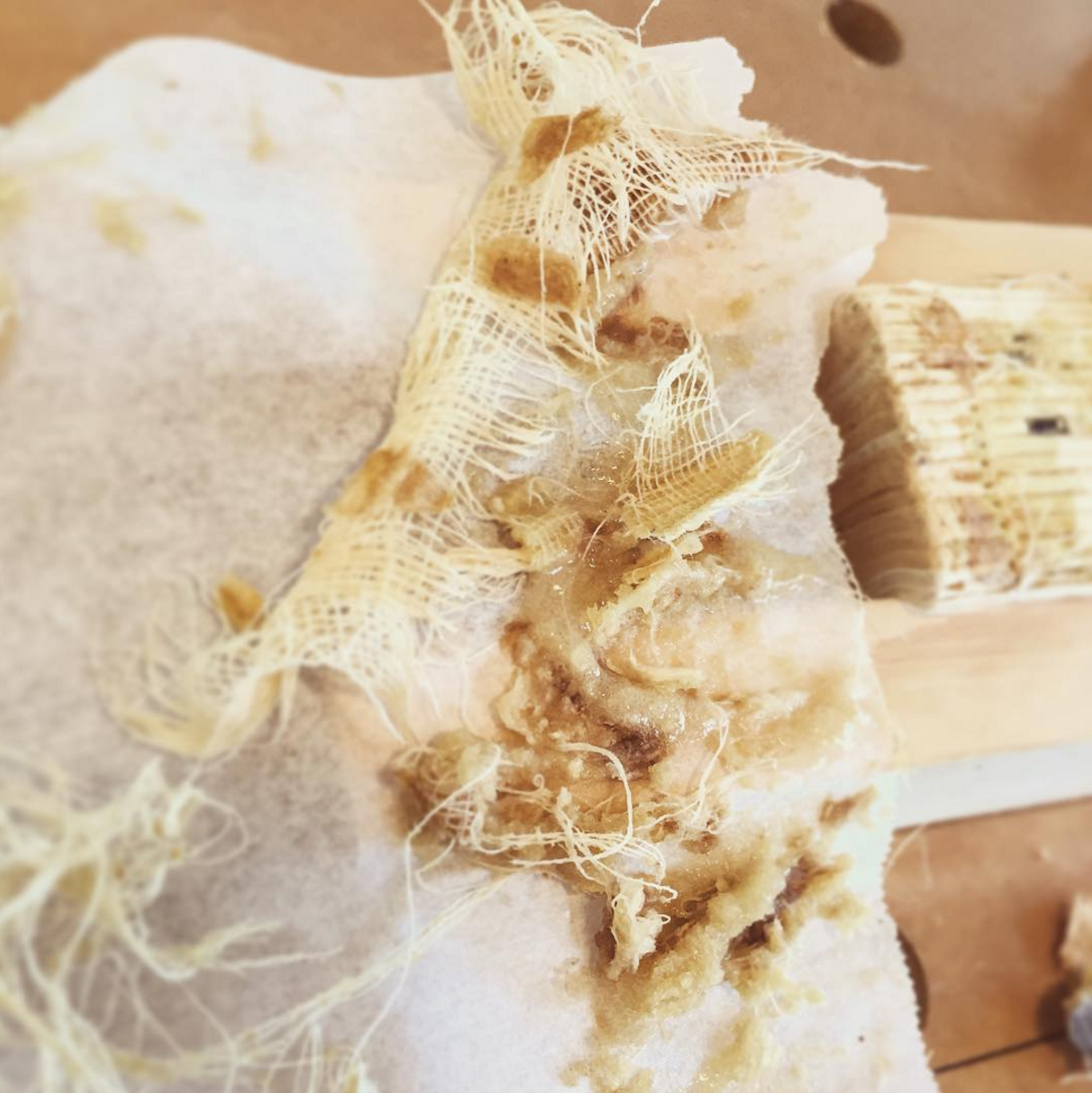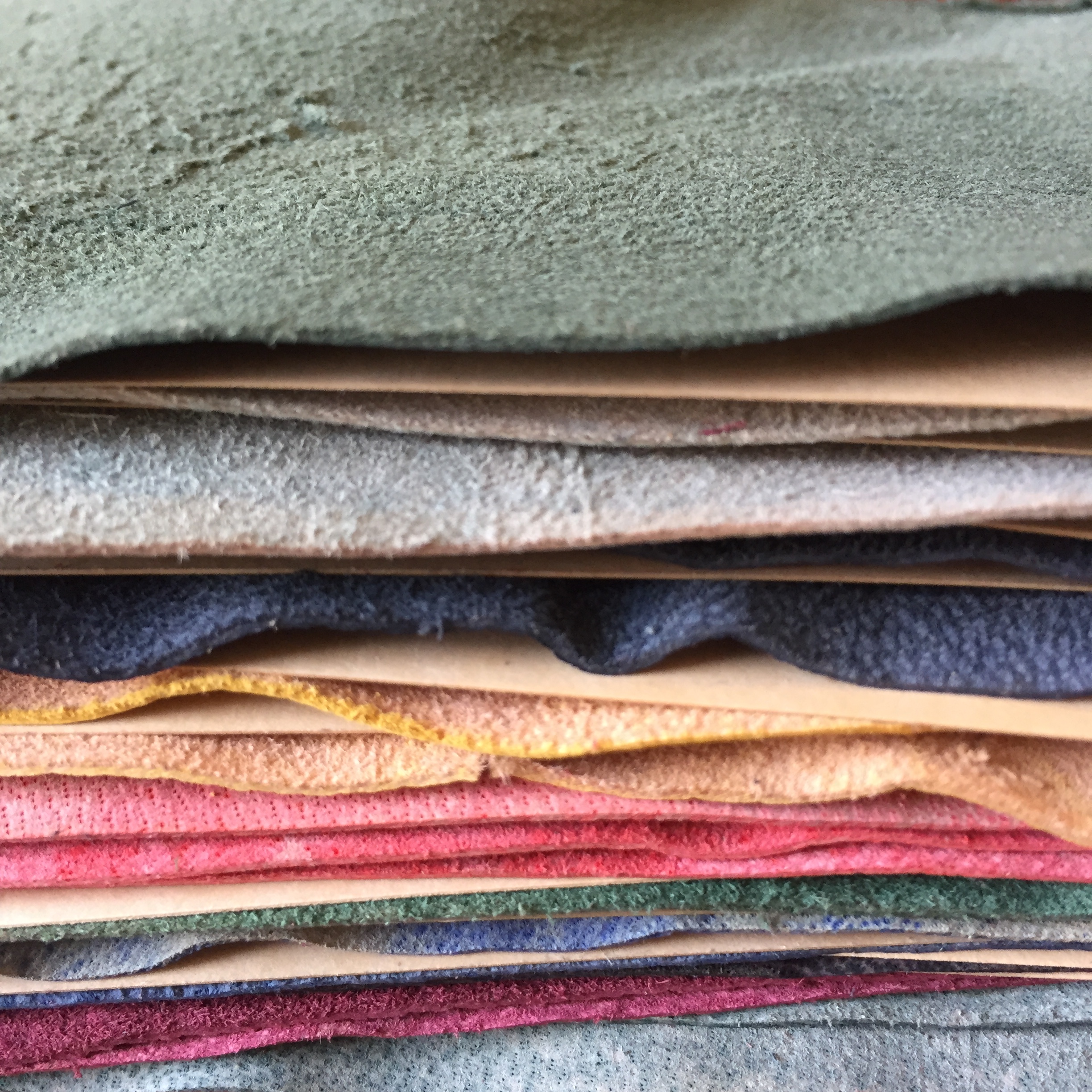When it comes to the repair of books and paper, less is certainly more. But when repairs are necessary, the use of the finest archival materials, reversible treatments, and a working knowledge of the Code of Ethics set out by the American Institute for the Conservation of Historic and Artistic Works (AIC) are the tools used for preserving your favorite tomes. In the ever adapting field of book repair and conservation, staying up to date with new techniques and materials requires constant attention. Discussions with colleagues, periodic workshops, subscription to journals and newsletters, and attendance to the Guild of Book Worker's Conference and AIC's Annual Meeting are indispensable. Working with the highest quality artists and manufacturers is just another tool to help ensure the longevity of your book and its repairs.
Dry Cleaning Sponges
The first line of defense, surface cleaning removes dirt, mold and other debris without introducing moisture or altering original material. Made of vulcanized rubber, these sponges have often revealed a book's gilt edge behind a layer of soot and dust.
Wheat Starch Paste
Wheat Starch Paste is not only incredibly strong, but it is also reversible and archival, making it the perfect conservation adhesive. Because it starts as a powder, it is easy to control how thick or thin it is by adding more or less water before cooking.
Kozo Tissue
Handmade from the fibers of the Mulberry tree, long-fibered kozo tissue is thin, but strong. Paired with wheat-starch paste it can be used to mend tears, infill losses, and even reattach the covers to books. Kozo tissues come in all different colors and weights, and can be toned to match repairs using water colors and acrylic paints.
Methyl Cellulose
Methyl Cellulose is a powder that when mixed with distilled water becomes a clear, pH neutral gel. It can be used as a reversible adhesive, or as a poultice to aid in the cleaning of book spines. After mechanically scraping the spine to remove as much of the unwanted material as possible, a layer of methyl cellulose is applied to soften any remaining leather, paper, and adhesive.
PVA
PVA, or poly vinyl acetate, is a synthetic adhesive that dries clear, strong and flexible. While there are many different brands available(such as Elmers or wood glue) Jade 403 has been designed specifically for bookbinding and conservation. Because it is not easily reversible, Jade 403 is used primarily for new bindings and boxes. When it is required in a repair, a release layer of kozo tissue and wheat starch paste is applied first.
Heat
Tape is unfortunately a common sight, causing more harm than good. It is often necessary to remove it before a more gentle and sympathetic repair can be made. A heat set spatula generates just enough heat to allow the safe removal of the plastic carrier before the tape's adhesive can be removed.
Leather
Leather is perhaps the most exciting, and difficult of all of the conservation materials to use. It needs to be cut and parred to an exact size and thickness, and often requires the use of several different blades and knives to achieve this. Goat and calf are among the most common types of leather used in conservation, and they come in a wide variety of colors. I'm proud to work with Harmatan and Oakridge Leathers, Pergamena Leather and Parchment, and J Hewit & Sons Leather Manufacturers.
Rigid Gellan Gel
Gels are being used more and more in the field of conservation. They are highly customizable in their shape, pH levels, and moisture content. With a very low water level, these gels are perfect for slowly humidifying and cleaning paper. They absorb impurities without causing extreme swelling or distortion to the paper fibers, providing a safe and controllable way to remove stains.
Marbled Paper
Each sheet is hand marbled using authentic techniques, and quite often historical pigments as well. If a cover is missing, new endsheets can be made to match the existing sheet or fragments; or a new paper can be found that is sympathetic in color and design to the time of the book's original printing. The Marbler's Apprentice, Chena Rivers, Jemma Lewis, and Payhembury Marbled Papers are a few of the talented artists I am privlaged to work with.
Cast Acrylic Films
When infilling losses on the spine or cover of a book, toned kozo tissue is often a good match. However, in the case of a highly texturized, original material, the flatness of the new tissue can sometimes be too obvious. With the use of a silicon mold and acrylics, a replica of the original texture can be created on kozo tissue, providing a strong and aesthetically pleasing repair.
Book Board
Larson-Juhl Superior Millboard has a pH of 7.5-9 and is lignin free and archival. It is a high density board made exclusively for Conservation By Design Limited, and is of the highest bookbinding quality.










